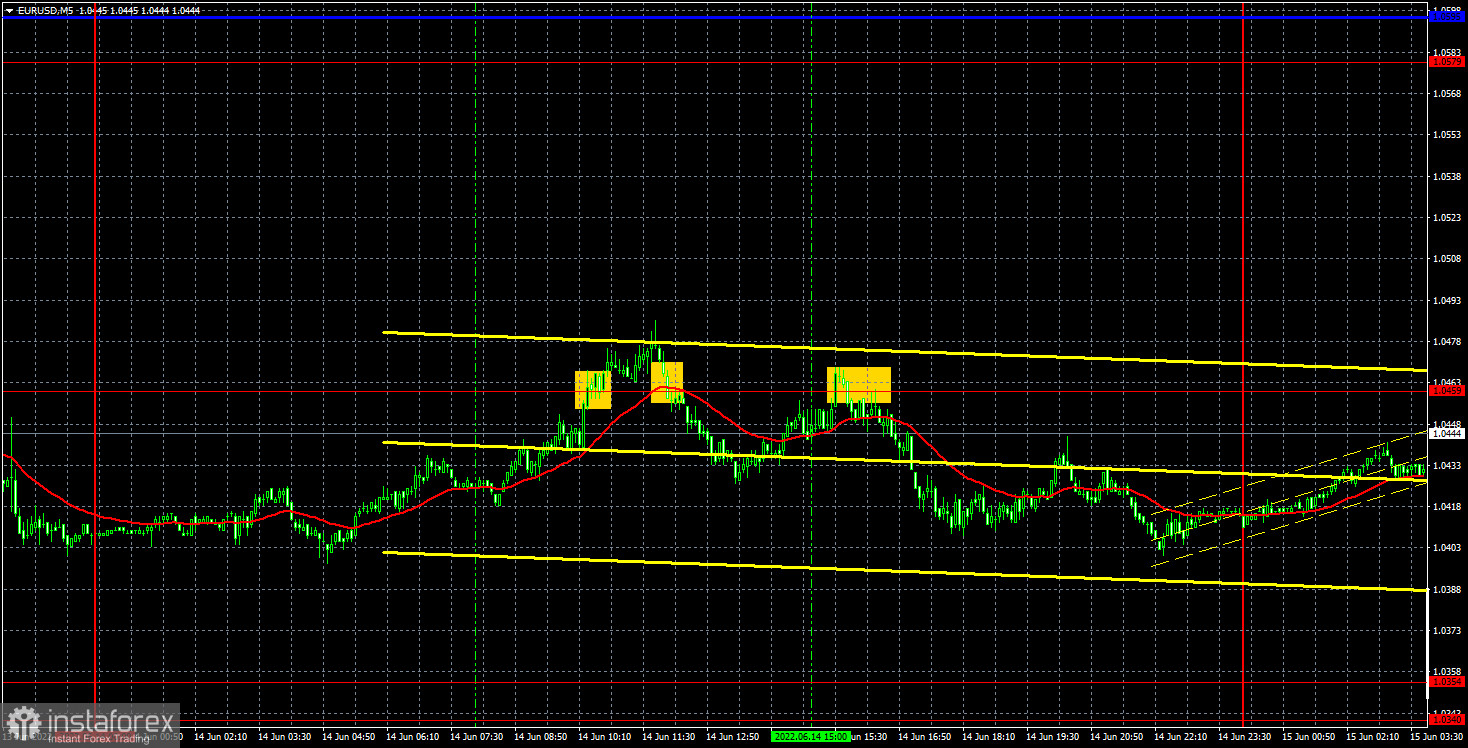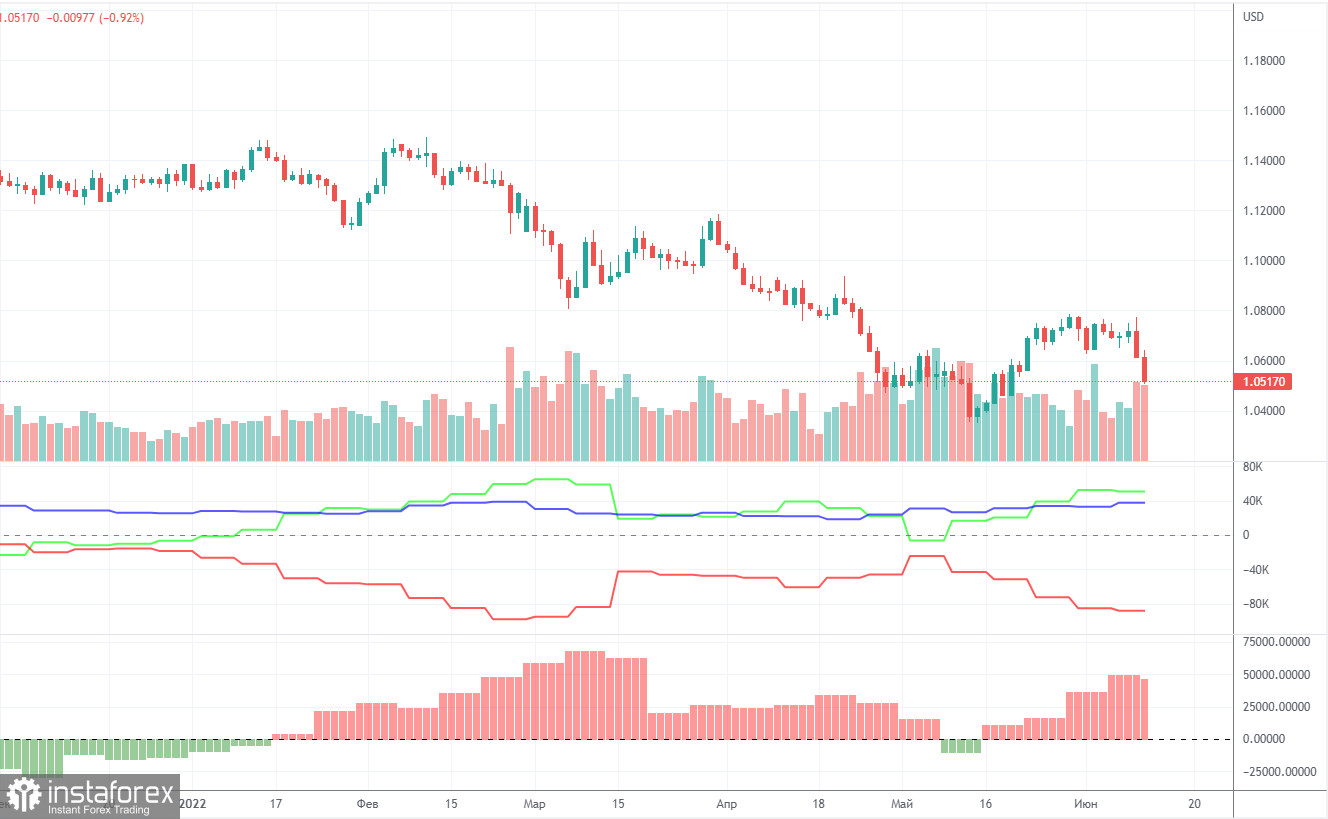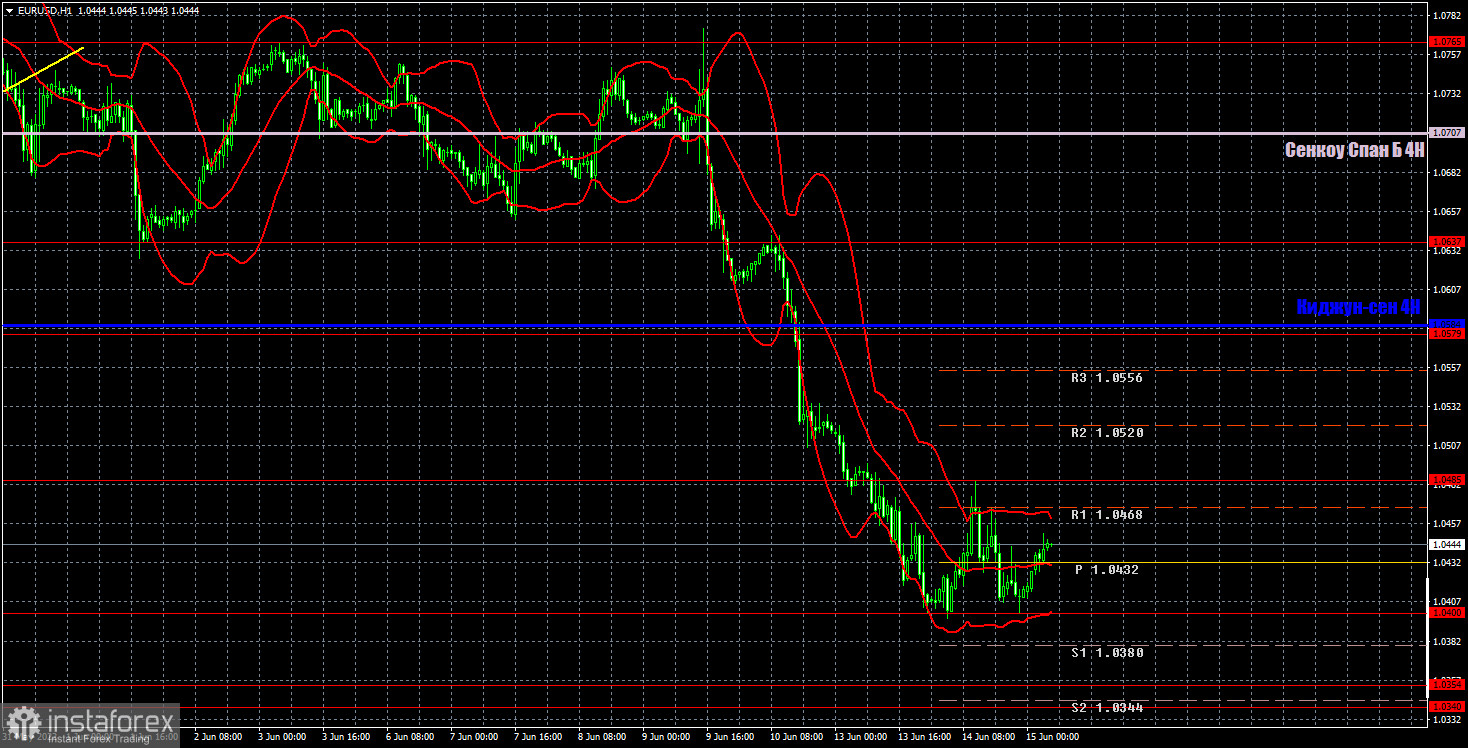EUR/USD 5M

The EUR/USD pair tried to correct on Tuesday, but these impulses ended very quickly. The euro managed to grow only slightly above the level of 1.0459, after which it fell to its local lows, which are already in close proximity to 20-year lows. In principle, the euro currency is now maintaining both a short-term downward trend and a long-term one. But now everything will depend on how the market reacts to the results of the Federal Reserve meeting tonight. It is how the market will react, not what the results themselves will be. Recall that the Fed may raise rates by 0.5%, by 0.75%. We believe that both options can already be taken into account in the current course of the pair. However, as it really is, it is impossible to predict how the market will behave when it sees a new rate, of course. Therefore, we fully assume that today the euro will fall with renewed vigor or, conversely, show impressive growth (if, for example, the Fed raises the rate by only 0.5%). Thus, any conclusions on the further trend should be made tomorrow, when the market has fully digested the information from the Fed.
As for trading signals, there were several of them on Tuesday and each of them left much to be desired. First, the pair broke the level of 1.0459, forming a buy signal, but failed to continue rising. Then it overcame the same level from top to bottom, forming a sell signal, and then bounced off it from below, forming another sell signal. For a long position, it was possible to avoid a loss by placing Stop Loss at breakeven after passing 15 points in the right direction. The same goes for the two short positions. The first one was also closed by Stop Loss, and the second one had to be closed manually in the late afternoon, so we managed to make a profit of about 30 points on it.
COT report:

The latest Commitment of Traders (COT) reports on the euro raised a lot of questions. Recall that in the past few months, they showed a blatant bullish mood of professional players, but the euro fell all the time. At this time, the situation has not changed. The euro tried to show growth, but last week it collapsed. Therefore, we again have a situation in which the mood of the major players is bullish, but the euro is falling. The number of long positions decreased by 6,300 during the reporting week, and the number of shorts in the non-commercial group decreased by 4,500. Thus, the net position decreased by 1,800 contracts per week. The number of long positions exceeds the number of shorts for non-commercial traders by 50,000. The second indicator in the chart above perfectly shows that the net position has been positive for a long time, and the pair's movement chart in the same chart shows a downward movement. From our point of view, this happens because the demand for the US dollar remains much higher than the demand for the euro . The "respite" for the euro, which has been observed in recent weeks, did not last long, and the global downward trend remains in force. Therefore, we believe that the data of COT reports on the euro still cannot be relied upon when predicting the future movement of the euro/dollar pair.
We recommend to familiarize yourself with:
Forecast and trading signals for GBP/USD on June 15. Detailed analysis of the movement of the pair and trading transactions.
EUR/USD 1H

An almost landslide decline continues on the hourly timeframe. We assumed that the pair would still correct slightly upwards on Tuesday, which, in principle, happened. This correction is very weak, and no one knows what will happen after the announcement of the results of the Fed meeting. You need to be ready for any options. However, in any case, we advise you to leave the market until late in the evening when trading within the day, and the results of the meeting and the press conference with Fed Chairman Jerome Powell will take place very late. Today, we highlight the following levels for trading - 1.0340-1.0354, 1.0400, 1.0489, 1.0579, 1.0637, as well as Senkou Span B (1.0707) and Kijun-sen (1 .0584). Ichimoku indicator lines can move during the day, which should be taken into account when determining trading signals. There are also secondary support and resistance levels, but no signals are formed near them. Signals can be "rebounds" and "breakthrough" extreme levels and lines. Do not forget about placing a Stop Loss order at breakeven if the price has gone in the right direction for 15 points. This will protect you against possible losses if the signal turns out to be false. The European Union will publish a report on industrial production, which theoretically can be worked out by traders. The US will release a report on retail sales, which theoretically can also be worked out. But the most important events of the day, of course, are the results of the FOMC meeting and Powell's speech.
Explanations for the chart:
Support and Resistance Levels are the levels that serve as targets when buying or selling the pair. You can place Take Profit near these levels.
Kijun-sen and Senkou Span B lines are lines of the Ichimoku indicator transferred to the hourly timeframe from the 4-hour one.
Support and resistance areas are areas from which the price has repeatedly rebounded off.
Yellow lines are trend lines, trend channels and any other technical patterns.
Indicator 1 on the COT charts is the size of the net position of each category of traders.
Indicator 2 on the COT charts is the size of the net position for the non-commercial group.





















